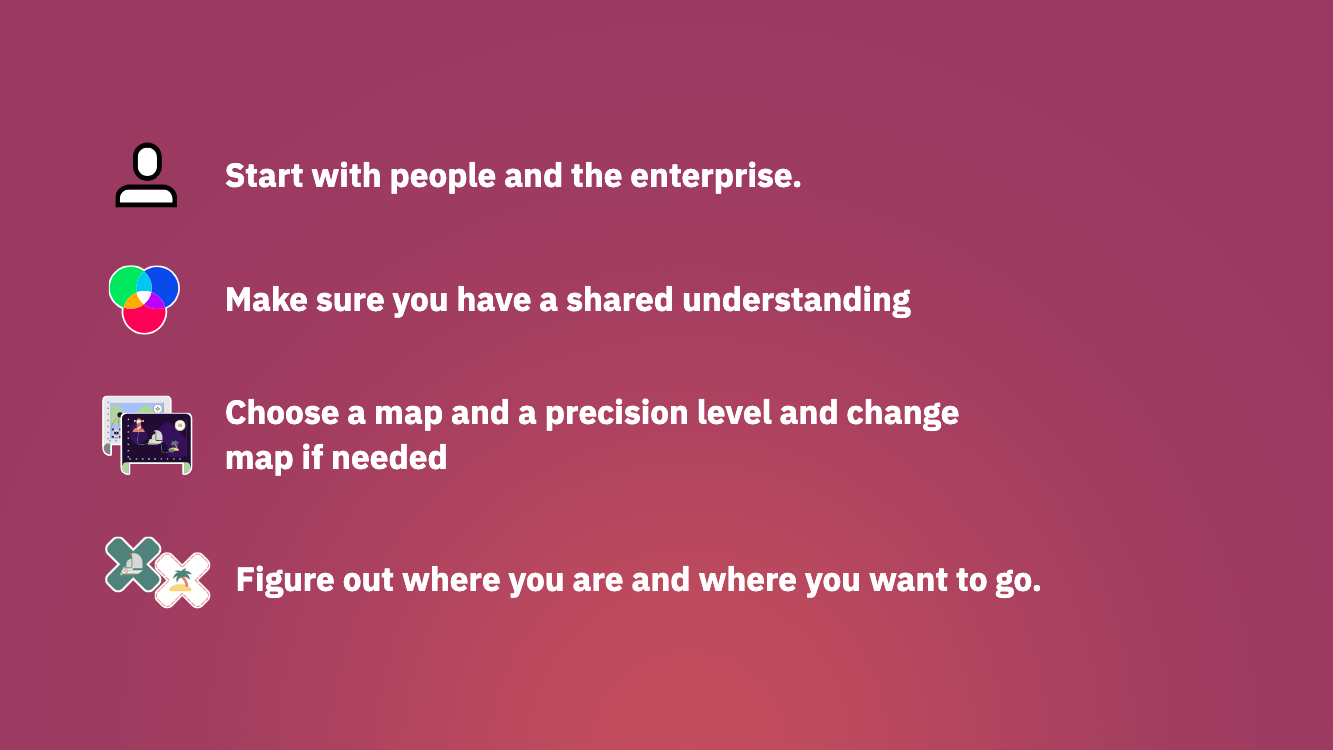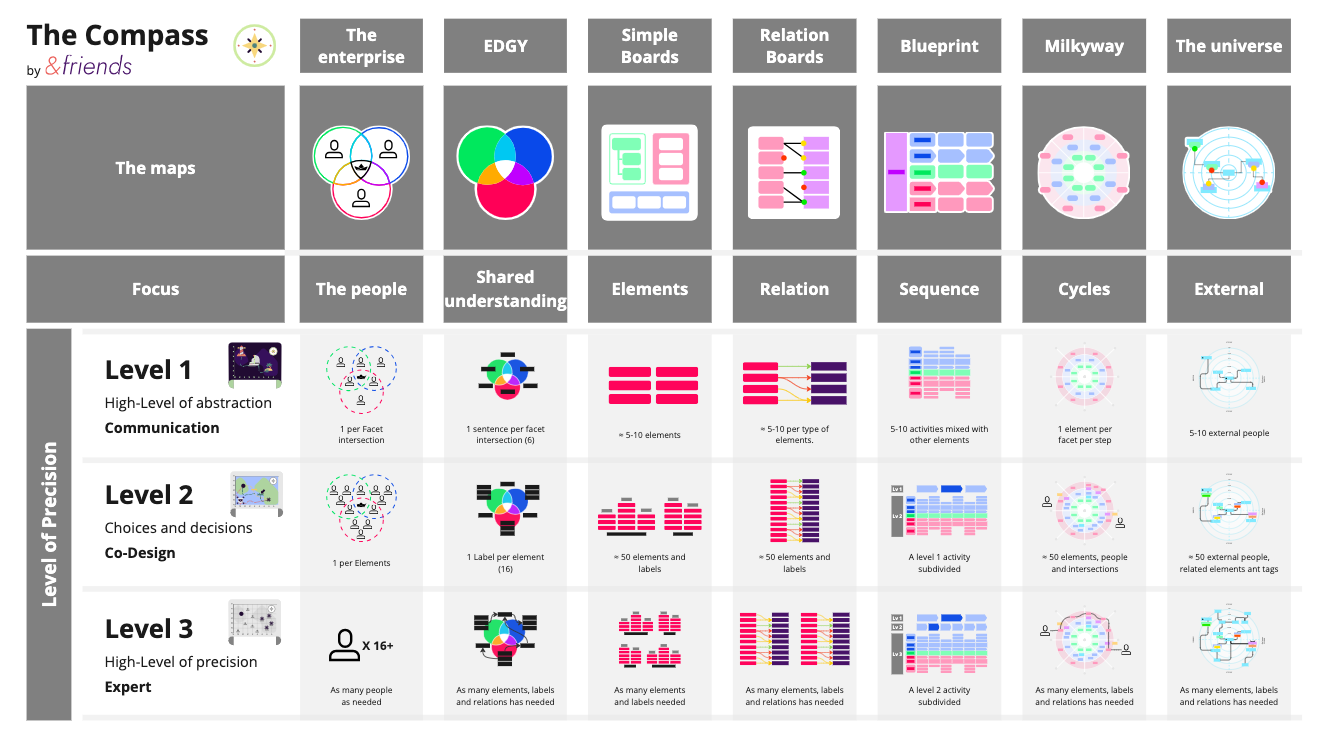So far, I've called it "The Compass" because its purpose is to help you orient yourself, providing a "north star" of sorts. The compass points north to give you a sense of direction, but you get to decide whether you want to go north or south.
You should start by considering the Enterprise and people, then move to the Venn diagram. But honestly, there are as many starting points as there are contexts. And remember, you can always go back to previous maps to update them.

It's a good idea to begin by framing the discussion. Is it about innovation? Impact? Solving a problem? Transformation? Understanding why we're here and what the discussion is about is crucial. This starting point does not need to be perfect, it just needs to exist. You should revisit it at some point. After all, how can you have a clear and well define enterprise if you haven’t done the work yet? You just need to start.
Next, consider the people. We often overlook the individuals behind the work. In my experience, everyone acknowledges the value of co-creation, but silos, tight deadlines, or limited resources often push us forward without the right people at the table. With EDGY, you can assess whether you have representation from every facet and intersection, ensuring diverse perspectives on the enterprise. EDGY helps you think about "casting" — who knows the processes? Who understands the users? Who knows why we're doing this? Does anyone have a deep understanding of our products?
Every organization is unique—whether it's divided into silos, teams, or business units. While there's no universally "right" or "wrong" way to structure an organization, it's crucial to foster meaningful conversations that bring together diverse perspectives from across the enterprise. A Venn diagram can be a useful tool to identify areas where these perspectives overlap, helping to build a shared understanding.
At EDGY, we offer a tool called the "Enterprise Scan," created by Helgi Björgvinsson. This tool provides a set of key questions designed to facilitate discussions about the organization. While there's no single "right" way to conduct an Enterprise Scan, the process is documented by the author on the EDGY Wiki.
At &friends , we're big fans of the Enterprise Scan. It has enabled us to have meaningful conversations that weren’t possible before.
You have to start somewhere, and in this case, your context is what matters. I had multiple starting points last year, so here are two examples.
I conducted a very complex audit related to digital transformation. It involved two years of work—strategy, documents, emails, and Miro boards to analyze. Countless hours. I spent most of my time at level 3, the expert level. At some point, I figured out what went wrong. I created a couple of level 2 maps to share with other experts working on the same issue. Once we all agreed on the solution, we developed a few level 1 maps to explain what had happened and where we should go next. We navigated from complex, overwhelming amounts of information to something simple and easy for everyone to understand.
In another project, a business contacted me to help its client start the implementation of an ERP system. These projects are indeed complex, but we couldn’t jump straight into all the expert-level details, right? So we began with a clear enterprise goal and gathered the right people. We created a level 1 Venn diagram and a level 1 Milky Way map to give an overview of the enterprise. Once everyone was aligned and agreed on the current state, we decided where to begin our level 2 investigation. We made a few blueprint maps to understand their processes and capabilities. Will we eventually get to the level 3 map? Maybe. Maybe not. Only if we need to.

As such, all these maps are there to help communicate with each other. They don’t need to be perfect, just good enough to help the enterprise reach its goals. Pick a map, make it good enough, and move on to the next, more meaningful conversation. Don’t be afraid to revisit an old map and edit it if needed.
Still not convinced? Is EDGY easy to use? In the next and final article of the series, we have a little surprise for you. ;-)
If you want to learn more, check out Jean-Sébastien's talk at the Intersection 24 conference and his LinkedIn page.
Did you like this blog post? Never miss an update when we publish next:
ENTERPRISE DESIGN PATTERNS
Capturing a wealth of experience from many sources, four world-class enterprise designers and architects present a collection of 35 immediately applicable solutions to successful enterprise design.
Buy the book